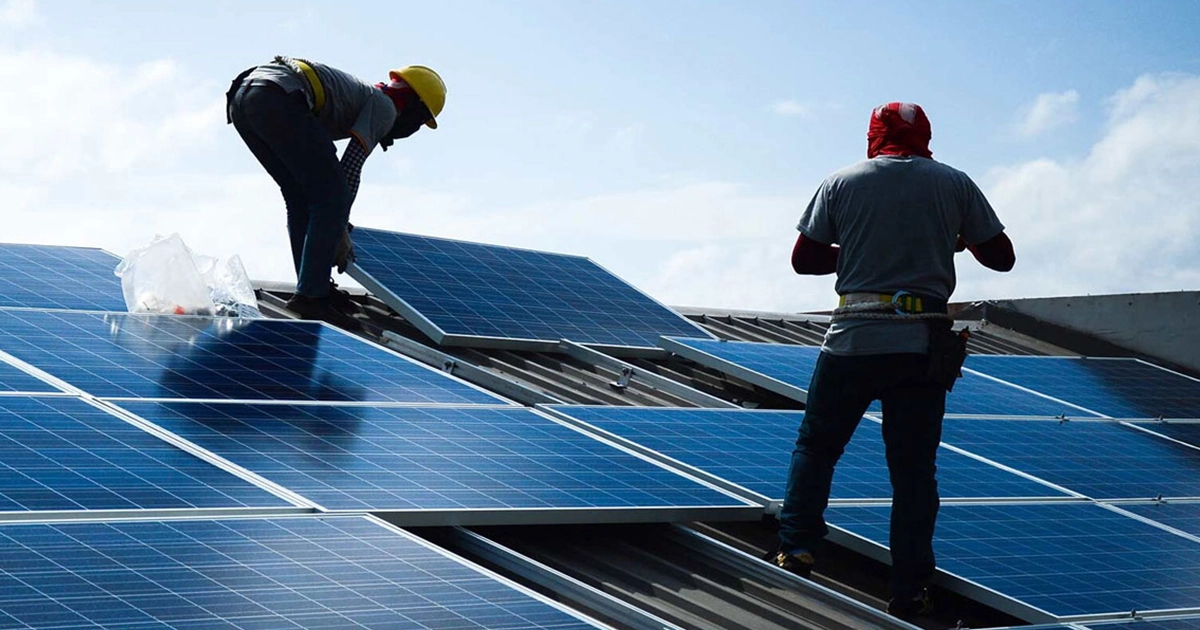Solar panels are a smart investment if you want reduced utility costs and a cleaner and more sustainable future. However, cleaning solar panels regularly is essential to ensure their longevity and maximum energy efficiency.
Many may think that cleaning solar panels can be a daunting task. Additionally, it is presumable that maintaining a solar panel will take most of your time and effort. In this article, we will help you explore tried-and-tested tips on how to clean solar panels.
Importance of Cleaning Solar Panels
Solar panels are exposed to elements like dirt, dust, pollution, and even bird pooping. So, over time, it can build up on the surface of the panels, which can directly affect the efficiency of the solar panel. It might be a good idea to monitor whether there is a sharp or gradual decline over time.
Studies done on the ‘Effect of dust accumulation on the performance of photovoltaic modules for different climate regions’ revealed that dirt accumulation in solar panels can reduce their production by 5-25%, depending on the level of contamination. Therefore, it’s important to clean the solar panels to ensure they operate at peak performance.
5 Tested Tips and Methods to Clean Your Solar Panels Efficiently
While rainwater can remove the accumulated dust and helps clean solar panels on roof, it isn’t an effective method to remove all the dirt at the bottom of the panel. Here are 5 effective practices to clear the solar panel.
Solar Panel Robot
Robotics technology is enabling companies to produce completely automatic and semi-automatic solar panel cleaners like SolarCleano F1A. SolarCleano F1A is a fully automated solar panel dry-cleaning robot that runs at a speed of 40m/min. It offers cleaning on wide surfaces such as greenhouses, carports, and shed roofs.
Manual Cleaning
To clean the solar panel by hand, start by gently removing any loose debris from its surface. Use a soft cloth or brush, a water hose, and soapy water. You can gently rinse the panels with a hose to remove the loose dirt and hardened residue before scrubbing.
Waterless Vibration
Waterless vibration is yet another effective method that can be operated automatically using an electric motor. This method doesn’t require any harmful chemicals, and is relatively easy.
Electrostatic Dust Removal
The electrostatic dust removal method uses an electric charge to stimulate dust particles on the surface of the solar panel. This method involves coating the top of the panel with a transparent conductive surface coated with aluminium-doped Zinc oxide, which repels dirt, dust, and other debris from solar panels when voltage is applied.
Cleaning solution
When choosing cleaning solutions, choose a solution with a neutral pH that is safe for the environment and free from harsh chemicals. You can also make your own cleaning solutions by combining dish soap, water, or one part vinegar to eight parts water.
Do’s and Don’t When Cleaning Solar Panel
Here are do’s and don’s on how to keep solar panels clean.
Do’s
- The most effective way to wash solar panels is with a hose or a bucket of warm water. Essentially, you would wash your car at home in the same manner.
- Be careful about using harsh soaps & detergents, as some soaps can leave a film or residue that not only leaves a mark but also attracts dirt to stick to the surface and manifest longer.
- Clean solar panels when they are moist or wet to ensure any dirt or residue stuck on them can be wiped off easily.
- Running a hose along with the panels for dirt removal on a regular basis would be highly beneficial.
- Stains that solidify and stick to the panel, e.g., bird droppings, need to be removed as soon as possible.
- The best time for cleaning the panels is early morning or late evening. During peak hours, not only are the panels too hot, but you may also lose a significant generation.
- Invest in a monitoring system to track daily energy production and detect any fluctuations in performance. Regularly review monitoring data to identify any issues or anomalies that may require attention.
- Keep solar panels out of shade to ensure maximum sunlight absorption and energy production. Trim any overhanging branches or foliage that may cast shadows on the panels.
Don’ts
- Never use an abrasive sponge or soap for cleaning your solar panel rooftop, as they may hamper the anti-reflective coating and scratch the glass. Both these conditions will render the panels void of their warranty. The best way to clean solar panels is with a soft rag or non-abrasive sponge.
- It is important not to use harsh materials when cleaning solar panels as they could cause damage.
- Avoid extremely high-pressure water sprayers when washing off your solar panels. A high-pressure attachment discharging water at pressures greater than 35 bar can damage the solar panels.
- Do not overclean your solar panel system. Unless there is a significant amount of dust in your area, a weekly cleaning should suffice.
For any further queries or information on solar panel cleaning and recommendations from experts, reach out to us at Fenice Energy.




